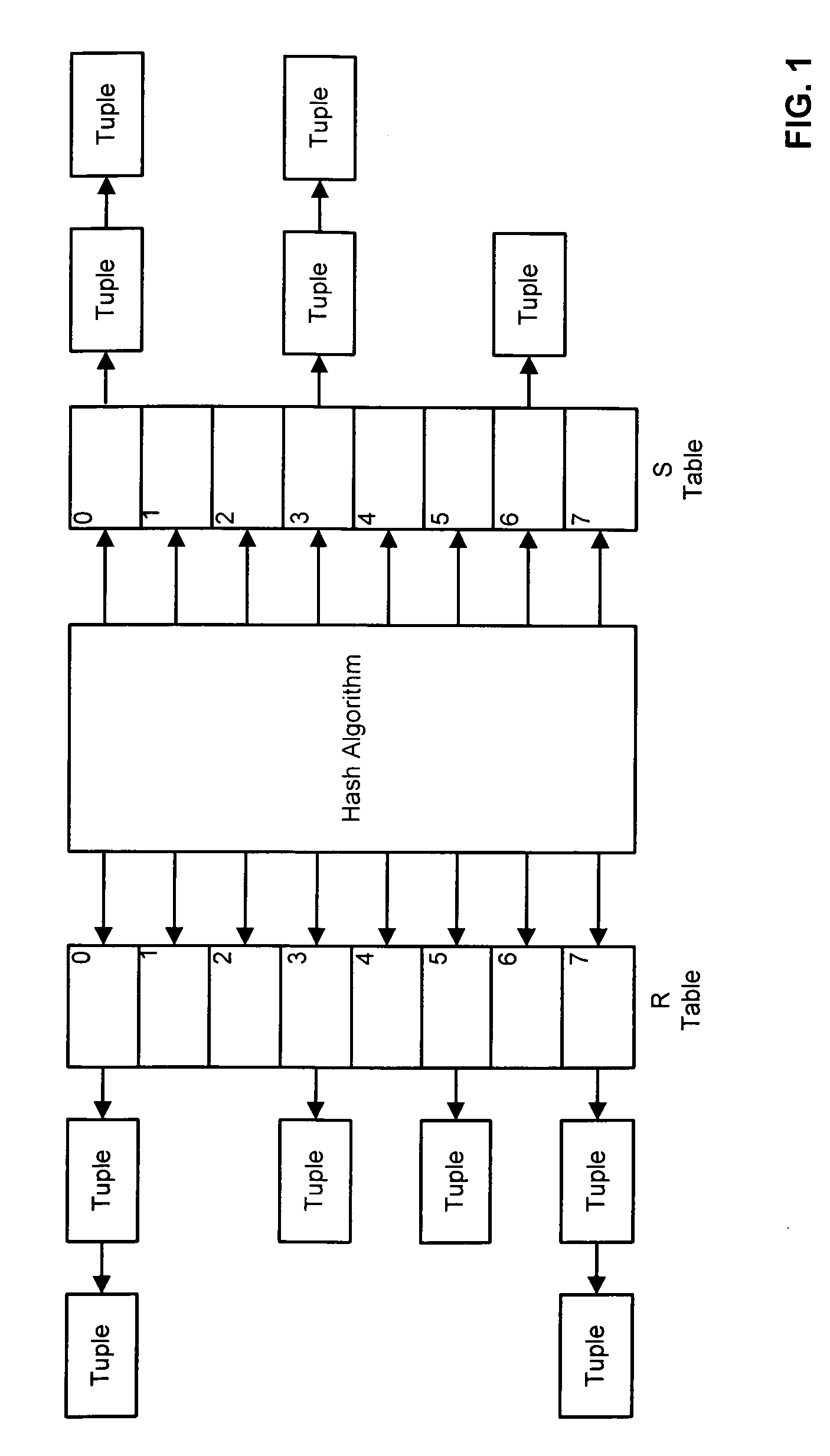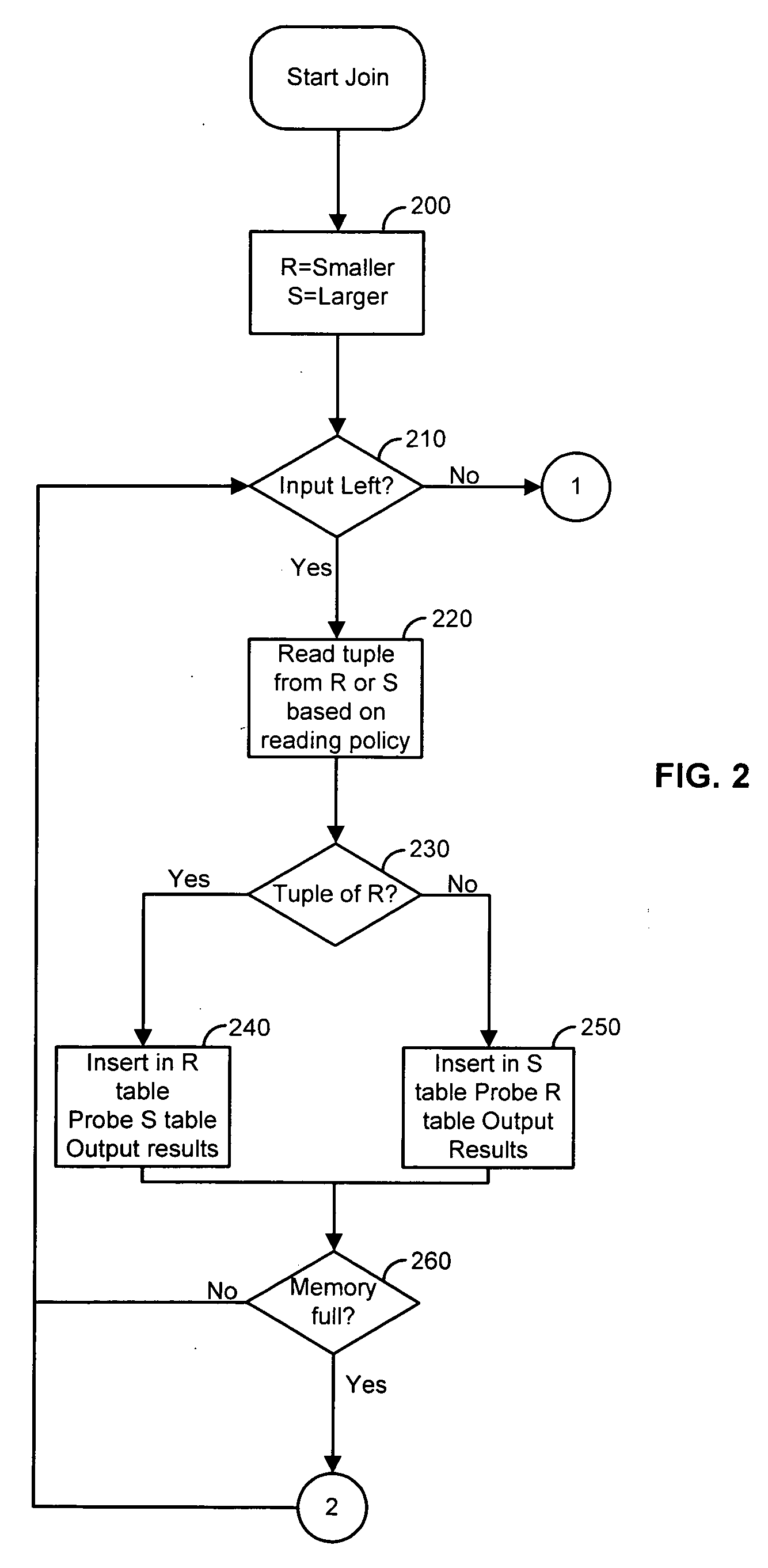Early hash join
a technology of hash join and hash, applied in the field of early hash join, can solve the problems of method that has both a rapid response time and a fast overall execution time, and achieve the effects of minimizing execution time, fast response time, and significantly shorter overall execution tim
- Summary
- Abstract
- Description
- Claims
- Application Information
AI Technical Summary
Benefits of technology
Problems solved by technology
Method used
Image
Examples
case 1
[0138] Both tuples are produced in the hashing phase. Assume TS(TR)S). Then, TS probes TR's hash table and generates an output. When TR arrived, TS was not in its hash table, so no output is generated. A similar argument follows for TS(TS)R). Thus, the hashing phase will not produce duplicate tuples.
case 2
[0139] One tuple was produced in the hashing phase, the other in the cleanup phase or by the background process. A tuple is produced by the hashing phase if:
[0140] 1. Both tuples are in memory before the P(TS) is flushed: TS(TS)F(SP(TS)) and TS(TR)F(SP(TS)) or
[0141] 2. TS arrives after TR and TS arrives before R's partition is flushed: TS(TS)>TS(TR) and TS(TS)F(RP(TS)).
[0142] For the cleanup phase or background process to produce a duplicate tuple, it must pass one of the three conditions of the timestamp check. Condition 1 is false because either TS(TR)F(SP(TS)) or TS(TS)>TS(TR). Condition 2 is false as either TS(TS)F(SP(TS)) or TS(TS)>TS(TR). Condition 3 is false as for both possibilities TS(TS)F(RP(TS))(as TSF(SP(TS))F(RP(TS)) for biased flushing). No duplicate tuples are generated.
case 3
[0143] One tuple produced by background process, the other by the background process or cleanup phase. A tuple is produced by the background process if tuple TR is in memory the last time a probe file was used containing TS: TS(TR)≦:lastProbeS. For either the background process or cleanup phase to generate a tuple already produced, it must pass one of the three conditions in the timestamp check. The addition of the condition TS(TR)>lastProbeS will prevent a duplicate tuple from being generated.
PUM
 Login to View More
Login to View More Abstract
Description
Claims
Application Information
 Login to View More
Login to View More - R&D
- Intellectual Property
- Life Sciences
- Materials
- Tech Scout
- Unparalleled Data Quality
- Higher Quality Content
- 60% Fewer Hallucinations
Browse by: Latest US Patents, China's latest patents, Technical Efficacy Thesaurus, Application Domain, Technology Topic, Popular Technical Reports.
© 2025 PatSnap. All rights reserved.Legal|Privacy policy|Modern Slavery Act Transparency Statement|Sitemap|About US| Contact US: help@patsnap.com



